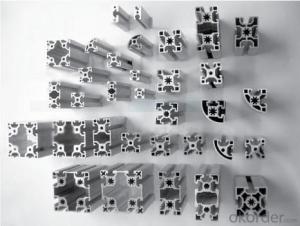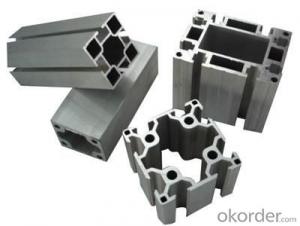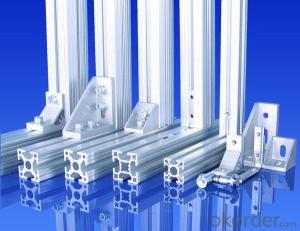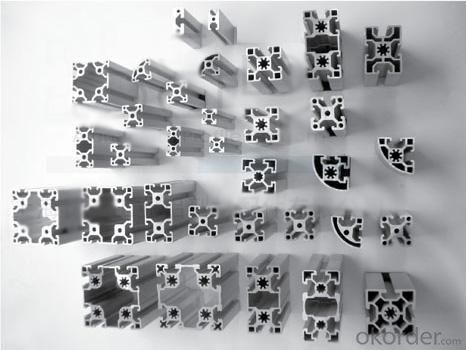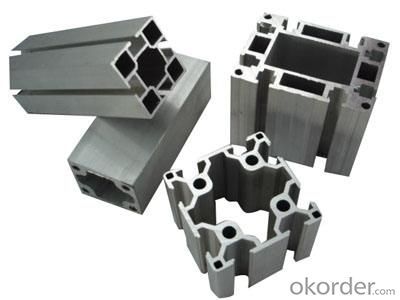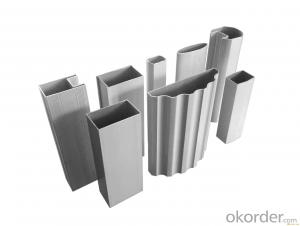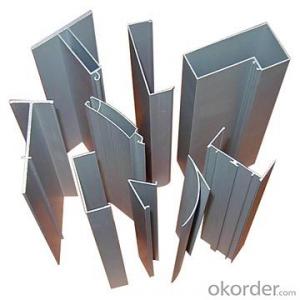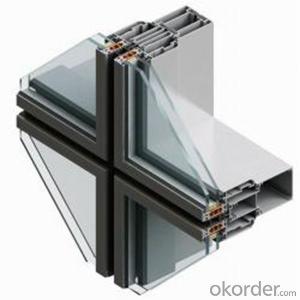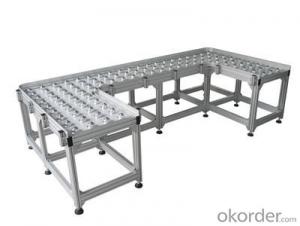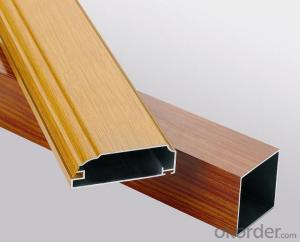Aluminum Structural Building Profiles - 6063 Alloy T5 Aluminium Profile for Doors and Windows
- Loading Port:
- Shanghai
- Payment Terms:
- TT OR LC
- Min Order Qty:
- 5 m.t.
- Supply Capability:
- 1000 m.t./month
OKorder Service Pledge
OKorder Financial Service
You Might Also Like
Specification
1.Structure of Aluminium Profile to Make Doors and Windows 6063 Alloy T5 Description:
Anodizing (also spelled anodising, particularly in the UK and Australia) is an electrolytic passivation process used to increase the thickness of the natural oxide layer on the surface of metal parts. Anodized aluminium surfaces, for example, are harder than aluminium but have low to moderate wear resistance that can be improved with increasing thickness or by applying suitable sealing substances.
2.Main Features of the Aluminium Profile to Make Doors and Windows 6063 Alloy T5 :
High corrosion-resistance;
weather-resistance;
heat-resistance;
alkali-resistance and impact-resistance properties.
3.Aluminium Profile to Make Doors and Windows 6063 Alloy T5 Images:
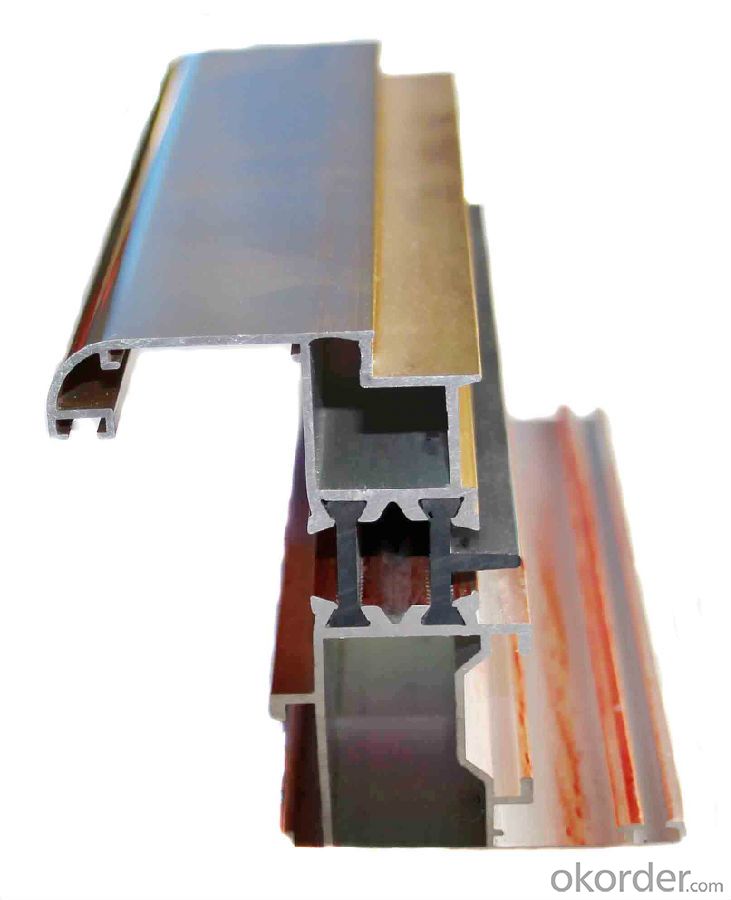
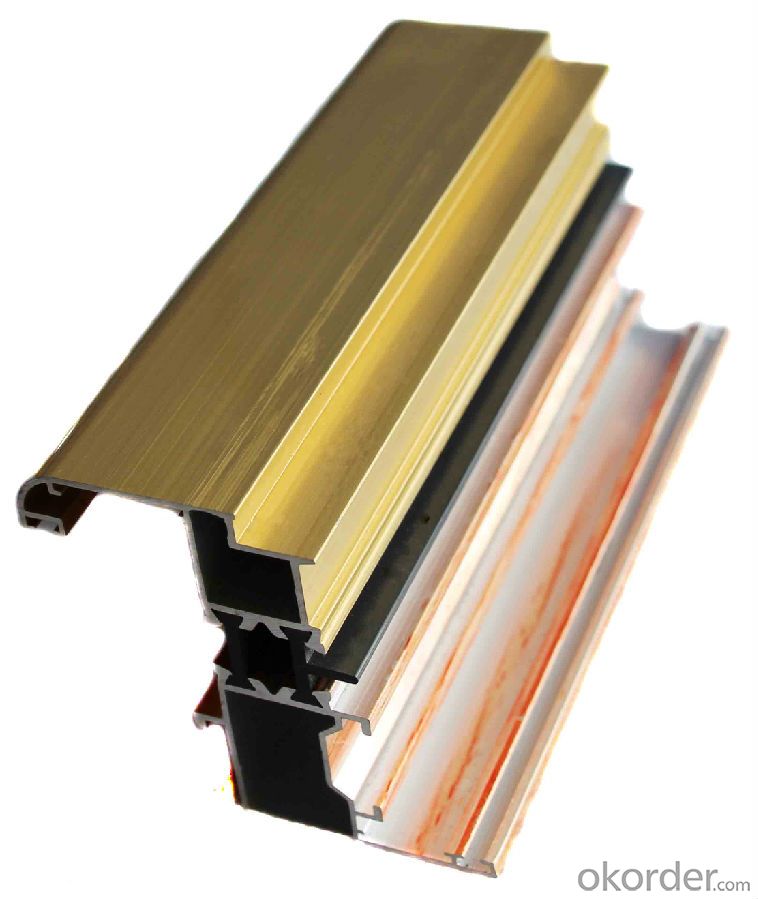
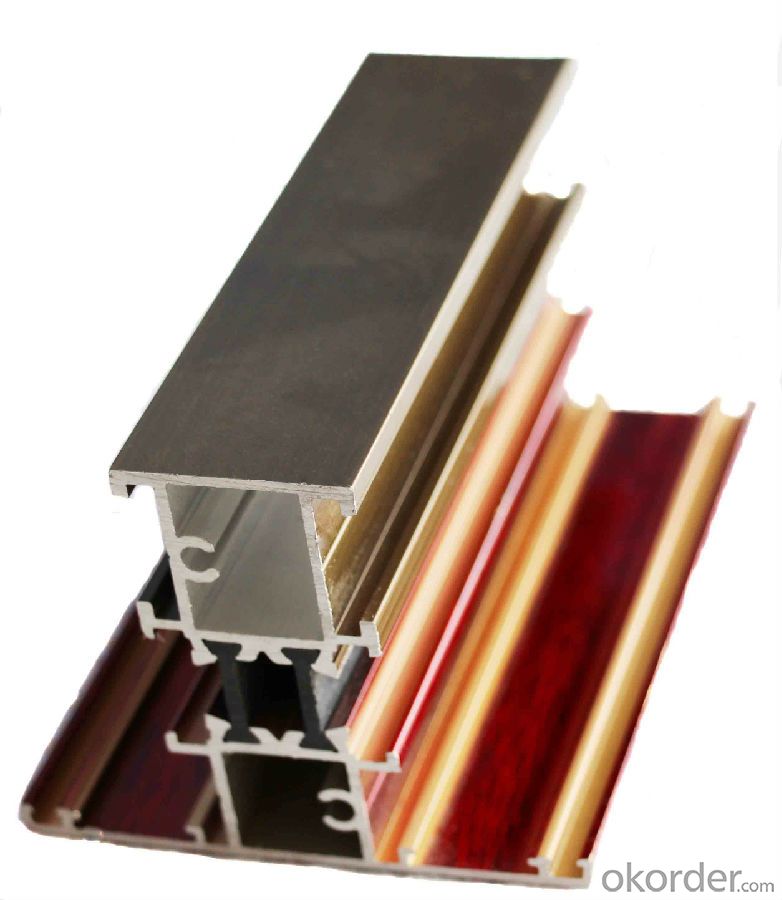
4.Aluminium Profile to Make Doors and Windows 6063 Alloy T5 Specification:
1. Material: 6063,6061,6060,6005,6005A,etc.
2. Temper: T5 or T6
3. Finish: Mill finish, anodizing, powder coating, electrophoresis, wooden transfer or pvdf/carbon-flouride coated, polishing, brushing, sand blasting
4. Various colors: Silver, bronze, black, gold, blue, grey, champagne, bright, etc.
5. Machining: Cutting, punching, drilling, tapping, milling, bending, welding, CNC etc.
5.FAQ:
①How about your company?
A world class manufacturer & supplier of castings forging in carbon steel and alloy steel,is one of the large-scale professional investment casting production bases in China, consisting of both casting foundry forging and machining factory. Annually more than 8000 tons Precision casting and forging parts are exported to markets in Europe, America and Japan. OEM casting and forging service available according to customer’s requirements.
②How to guarantee the quality of the products?
We have established the international advanced quality management system,every link from raw material to final product we have strict quality test;We resolutely put an end to unqualified products flowing into the market. At the same time, we will provide necessary follow-up service assurance.
- Q: What are the different shapes available for aluminum profiles?
- There are numerous shapes available for aluminum profiles, including but not limited to T-shapes, angles, channels, square tubes, rectangular tubes, round tubes, and custom profiles.
- Q: What are the different alloys available for aluminum profiles?
- There are several different alloys available for aluminum profiles, each with its own unique properties and characteristics. Some commonly used alloys include: 1. 6061-T6: This is one of the most widely used alloys for aluminum profiles. It offers excellent strength, corrosion resistance, and weldability. It is often used in structural applications such as frames, beams, and supports. 2. 6063-T5: This alloy is known for its good formability and extrudability, making it ideal for creating complex shapes and designs. It has good corrosion resistance and is often used in architectural applications, such as window frames and curtain walls. 3. 7075-T6: This alloy offers high strength and toughness, making it suitable for applications that require exceptional strength, such as aerospace components and high-stress structural parts. 4. 6082-T6: This alloy is similar to 6061-T6 in terms of strength and corrosion resistance, but it offers better machinability. It is commonly used in automotive and transportation industries. 5. 3003-H14: This alloy is primarily used for its excellent resistance to corrosion. It is often used in marine applications, as well as in chemical and food processing industries. These are just a few examples of the many alloys available for aluminum profiles. The choice of alloy depends on the specific requirements of the application, such as strength, corrosion resistance, formability, and machinability.
- Q: Is it possible to utilize recycled aluminum products as an alternative to new ones to decrease environmental impact and save costs?
- <p>Yes, using recycled aluminum products is an effective way to reduce environmental impact and cost. Recycling aluminum requires significantly less energy compared to producing new aluminum from raw materials, which reduces greenhouse gas emissions. Additionally, recycled aluminum retains the same properties as new aluminum, making it a viable alternative for many applications. This practice not only conserves resources but also lowers production costs, making it a sustainable choice for both the environment and your budget.</p>
- Q: This question asks for an explanation of the various methods employed in the manufacturing of aluminum profiles.
- <p>Aluminum profiles are produced using several manufacturing processes, each suited to different applications and profile shapes. The primary methods include: Casting, where molten aluminum is poured into molds to form profiles; Extrusion, the most common process, where aluminum is pushed through a die to create long, continuous shapes; Rolling, used for creating flat or curved sheets and plates; Forging, which involves shaping aluminum by applying compressive forces; and Machining, where aluminum profiles are cut and shaped using tools. Each process has its advantages and is chosen based on the desired profile's complexity, strength, and cost-effectiveness.</p>
- Q: Is it feasible to recycle aluminum profiles economically and in significant quantities?
- <p>Yes, aluminum profiles can be recycled at a reasonable cost and volume. Recycling aluminum is more cost-effective than mining and refining new aluminum from bauxite. The process requires less energy, which reduces costs. Additionally, aluminum has a high recycling rate, with about 75% of all aluminum ever produced still in use today. This indicates that aluminum recycling is both economically viable and can be done in significant volumes, contributing to sustainability and waste reduction.</p>
- Q: What are the advantages of using aluminum profiles in the marine industry?
- There are several advantages of using aluminum profiles in the marine industry. Firstly, aluminum is highly resistant to corrosion. When exposed to saltwater and other harsh marine environments, aluminum profiles do not rust like other metals such as steel. This makes it a reliable and durable material for various marine applications. Secondly, aluminum profiles are lightweight yet strong. This characteristic allows for easier handling and installation, reducing the overall weight of the vessel. This not only improves fuel efficiency but also increases the payload capacity of the boat, enabling it to carry more cargo or passengers. Additionally, aluminum profiles are highly customizable. They can be easily shaped, cut, and welded to meet specific design requirements. This flexibility allows for the creation of complex structures and intricate designs, providing architects and engineers with endless possibilities in marine construction. Furthermore, aluminum is a sustainable material. It is 100% recyclable and retains its properties even after multiple recycling processes. This makes it an environmentally friendly choice for the marine industry, aligning with the growing demand for sustainable practices. Lastly, aluminum profiles offer excellent thermal conductivity. This property allows for better heat dissipation, reducing the risk of overheating in marine applications. It also enables the efficient transfer of heat in cooling systems, enhancing the overall performance of marine engines and equipment. In conclusion, the advantages of using aluminum profiles in the marine industry include corrosion resistance, lightweight yet strong characteristics, customizability, sustainability, and excellent thermal conductivity. These benefits make aluminum profiles an ideal choice for various marine applications, contributing to the overall efficiency, durability, and environmental friendliness of marine vessels and structures.
- Q: Are aluminum profiles resistant to mold or mildew?
- Yes, aluminum profiles are resistant to mold or mildew.
- Q: How do aluminum profiles contribute to daylighting strategies?
- Aluminum profiles contribute to daylighting strategies by being used in the construction of windows, doors, and skylights. These profiles are designed to be lightweight, durable, and have excellent thermal properties. They allow for larger glass panels, maximizing the amount of natural light that enters a space. Additionally, the profiles can be customized to accommodate different glazing options, such as low-emissivity coatings or solar control films, which help regulate heat gain and loss. Overall, aluminum profiles enhance daylighting strategies by promoting the use of natural light, reducing reliance on artificial lighting, and improving energy efficiency in buildings.
- Q: Are aluminum profiles suitable for use in the marine industry?
- Yes, aluminum profiles are suitable for use in the marine industry. Aluminum is a lightweight, durable, and corrosion-resistant material, making it ideal for various marine applications, including boat building, shipbuilding, and offshore structures. Its high strength-to-weight ratio allows for efficient and reliable construction, while its resistance to saltwater and harsh environmental conditions ensures longevity. Additionally, aluminum profiles can be easily fabricated, providing flexibility in design and customization. Overall, aluminum profiles offer numerous advantages that make them well-suited for use in the marine industry.
- Q: Can aluminum profiles be subjected to painting or coating processes to enhance their aesthetic appeal and longevity?
- <p>Yes, aluminum profiles can be painted or coated to improve their appearance and durability. The process usually involves cleaning the aluminum to remove any contaminants, followed by a conversion coating to enhance adhesion. After that, a primer is applied, and finally, the paint or coating is applied. This not only enhances the visual appeal but also protects the aluminum from corrosion and wear, extending its lifespan.</p>
Send your message to us
Aluminum Structural Building Profiles - 6063 Alloy T5 Aluminium Profile for Doors and Windows
- Loading Port:
- Shanghai
- Payment Terms:
- TT OR LC
- Min Order Qty:
- 5 m.t.
- Supply Capability:
- 1000 m.t./month
OKorder Service Pledge
OKorder Financial Service
Similar products
Hot products
Hot Searches
Related keywords
